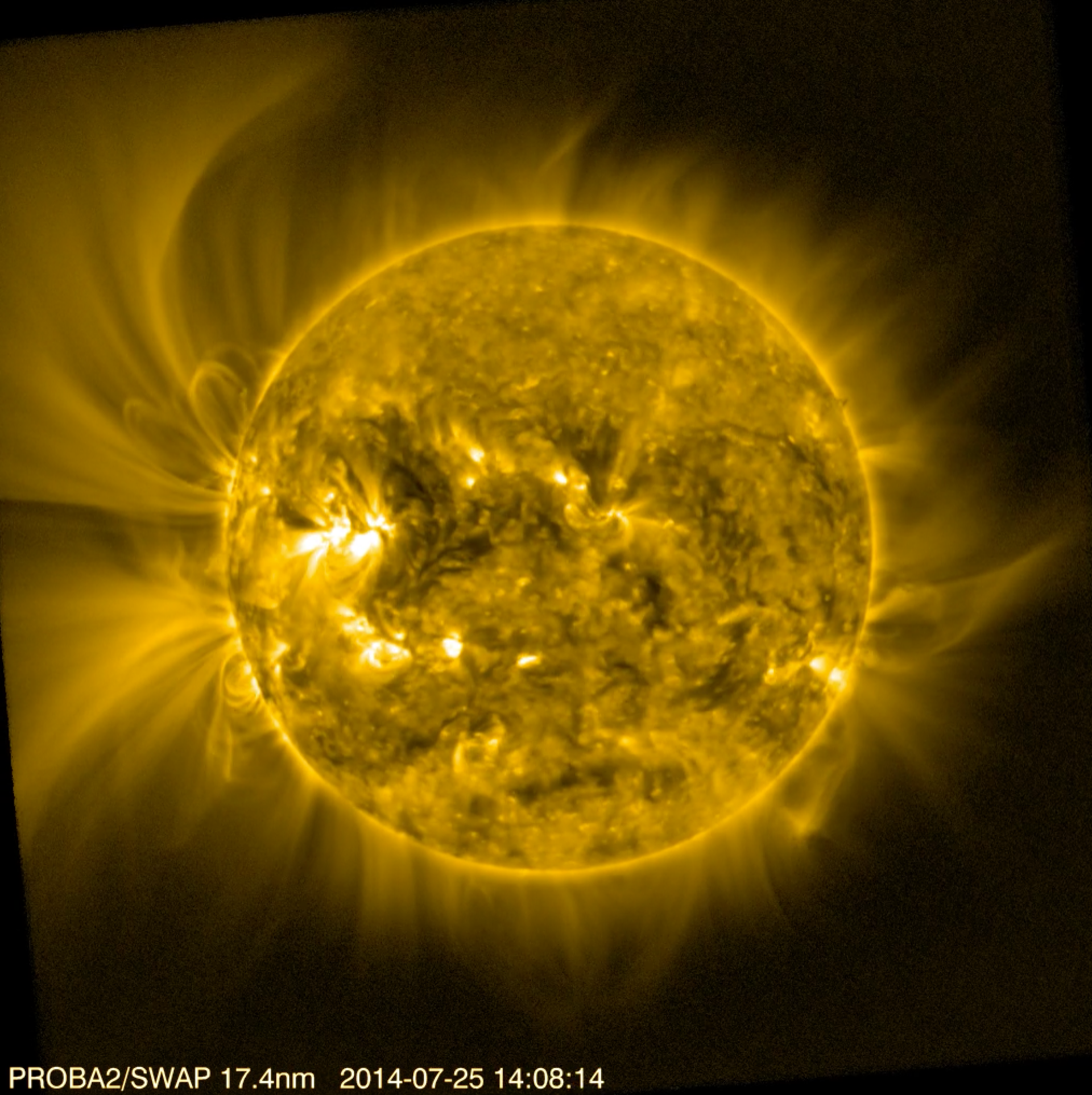

Whereas now, we're watching the disk of the sun 24 hours a day with a very rapid cadence. But, a solar flare has happened in that 15 minutes and you don't get to watch it. Before it was every several hours or every 15 minutes. It's amazing the difference in your understanding when you take a picture every 12 seconds. What we're doing differently with SDO is that we are taking a lot of them. We've been taking pictures of the sun at these short wavelengths actually for quite a while. Have we been ever been able to see the sun with such great detail before? We have a lot of fancier electronics, but in reality it looks a lot like a digital camera. And then they have a CCD where the pictures are taken. Those telescopes are very similar to the ones we use on the ground, but they have special filters that allow only this extreme ultraviolet light to get through. The easiest to understand is the one that takes the lovely color pictures of the corona that everybody likes to look at. So, how does NASA take a photo of the sun?

Below (interspersed among the photos) is a lightly edited transcript of our conversation. Recently, I spoke with Dean Pesnell, a SDO project scientist, about how these remarkable images are created. The images that the observatory has beamed back to Earth are sublime in the truest sense of the word-evocative of sheer power and with sharp contrasts. The results of the mission, so far, have been as informative as they are beautiful. If we can predict the next Carrington event-an 1859 solar storm so strong it temporarily powered telegraphs-we may be able to avoid trillions of dollars in damages. In 2010, NASA launched the Solar Dynamics Observatory, a spacecraft equipped with instruments to improve our understanding of our star's magnetic field, with the hope of achieving better solar forecasts. NASA Administrator Charles Bolden put it like this last year: Solar weather is "a problem that crosses all borders." power grid, sending us temporarily back to the Dark Ages-without electricity, without cable, without selfies.

A severe enough solar storm could wipe out a portion of the U.S.


 0 kommentar(er)
0 kommentar(er)
